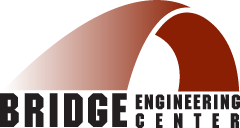Project Details
07/25/11
04/30/13
Federal Highway Administration State Planning and Research Funding
Iowa Department of Transportation
Researchers
Lisa Brasche
David Eisenmann
About the research
Technical challenges exist with infrastructure that can be addressed by nondestructive evaluation (NDE) methods, such as detecting corrosion damage to reinforcing steel that anchor concrete bridge railings to bridge road decks. Moisture and chloride ions reach the anchors along the cold joint between the rails and deck, causing corrosion that weakens the anchors and ultimately the barriers.
The Center for Nondestructive Evaluation at Iowa State University has experience in development of measurement techniques and new sensors using a variety of interrogating energies. This research evaluated feasibility of three technologies—x-ray radiation, ground-penetrating radar (GPR), and magnetic flux leakage (MFL)—for detection and quantification of corrosion of embedded reinforcing steel.
Controlled samples containing pristine reinforcing steel with and without epoxy and reinforcing steel with 25 percent and 50 percent section reduction were embedded in concrete at 2.5 in. deep for laboratory evaluation. Two of the techniques, GPR and MFL, were used in a limited field test on the Iowa Highway 210 Bridge over Interstate 35 in Story County.
The methods provide useful and complementary information. GPR provides a rapid approach to identify reinforcing steel that has anomalous responses. MFL provides similar detection responses but could be optimized to provide more quantitative correlation to actual condition. Full implementation could use either GPR or MFL methods to identify areas of concern, followed by radiography to give a visual image of the actual condition, providing the final guidance for maintenance actions.

